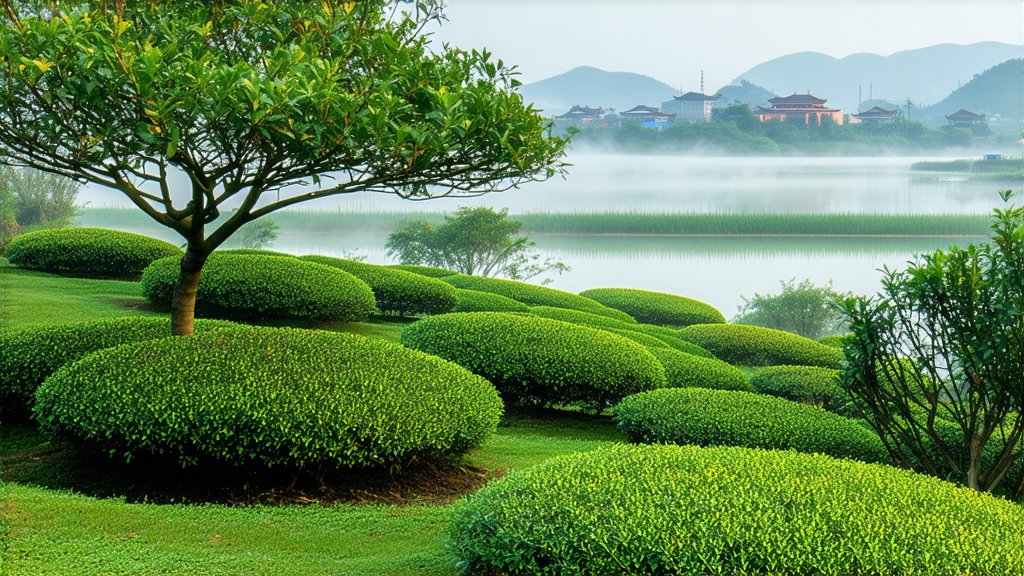
In the vast tapestry of Chinese tea culture, few varieties stand out as distinctly as Longjing, or Dragon Well tea. This revered green tea, hailing from the picturesque region surrounding West Lake in Hangzhou, Zhejiang Province, has captured the hearts and palates of tea connoisseurs worldwide. Its slender leaves, vibrant emerald hue, and unique chestnut aroma have earned it a place among the most celebrated teas globally. Let us embark on a journey through time and tradition to unravel the history, varieties, meticulous production process, and art of appreciating this exquisite beverage.
A Glimpse into History
The origins of Longjing tea can be traced back over a millennium, with its cultivation believed to have begun during the Tang Dynasty (618-907 AD). However, it was during the Qing Dynasty (1644-1912) that Longjing gained prominence, particularly under the reign of Emperor Kangxi, who declared it the official tea for the imperial court. The name "Dragon Well" is derived from a well located near the tea gardens, which, according to legend, was once visited by a dragon. This mythological association added an air of mystique and prestige to the tea, further enhancing its reputation.
Varieties of Dragon Well Tea
While Longjing tea primarily refers to a single variety, there are subtle distinctions within it based on the timing of harvest and the elevation at which it is grown. The earliest spring harvest, known as "Pre-Qingming" or "Mingqian," is considered the finest due to the tender young leaves and buds that yield a sweeter, more delicate flavor. Following this is the "Post-Qingming" harvest, which still offers high-quality leaves but with a slightly stronger character. Elevation also plays a role; higher altitudes tend to produce teas with a more pronounced umami taste and a finer texture.
The Art of Crafting Longjing Tea
Longjing's distinctive characteristics are a result of its intricate production process, which combines traditional techniques passed down through generations with meticulous attention to detail. Here's a step-by-step overview:
-
Plucking: The process begins in late March or early April when skilled tea pickers carefully select only the top one to two leaves and the bud from each shoot. This ensures the freshest and most tender parts of the plant are used.
-
Withering: The freshly picked leaves undergo a brief withering period to reduce moisture content and prepare them for shaping. This step is crucial for developing the tea's unique aroma and flavor profile.
-
Fixation (Pan-Frying): Unlike other green teas that may be steamed or baked, Longjing is uniquely pan-fried. Master tea makers skillfully toss the leaves in large woks heated to around 200°C (392°F), using their hands to manipulate the temperature and ensure even heating. This process not only halts oxidation but also imparts the characteristic roasted nutty aroma to the tea.
-
Shaping: After fixation, the leaves are shaped by hand or machine to resemble flat needles, resembling the shape of a dragon's claws—hence the name "Dragon Well." This shaping process contributes to the tea's visual appeal and influences its brewing properties.
-
Drying: Finally, the shaped leaves are dried to remove any remaining moisture, ensuring stability and longevity. The drying process is done gradually to preserve the tea's delicate flavors and aromas.
Appreciating the Essence of Longjing
To truly appreciate Longjing tea, one must engage in the ritual of Gongfu Cha, or "the way of tea," which emphasizes mindfulness and respect for each component involved in the experience. Here’s how to savor this exceptional tea:
-
Warm the Teaware: Begin by rinsing your teapot and cups with hot water to cleanse them and maintain the optimal temperature for brewing.
-
Measure the Leaves: Use approximately 3-5 grams of loose leaf Longjing per 200ml of water. Adjust according to personal preference for strength.
-
Boil Water: Heat water to around 80-85°C (175-185°F), as boiling water would scorch the delicate leaves.
-
Steeping: Place the leaves into the warmed teapot and pour in the hot water gently. Let it steep for about 1-2 minutes for the initial infusion, allowing subsequent infusions to increase in duration slightly.
-
Observe & Inhale: As the leaves unfurl gracefully in the water, take a moment to admire their beauty and inhale the soothing aroma that fills the air.
-
Sip & Savor: Take small sips, allowing the tea to roll across your tongue and savor its complex flavors—a harmonious blend of sweetness, umami, and a lingering finish that reflects the terroir of its origin.
In conclusion, Longjing tea is more than just a beverage; it embodies centuries of Chinese cultural heritage, artisanal craftsmanship, and a deep connection to nature. From its storied past to its meticulous production process and the meditative act of its consumption, every aspect of Dragon Well tea invites us to slow down, appreciate the present moment, and indulge in a timeless tradition that transcends borders and generations. Whether you're a seasoned tea aficionado or a curious newcomer, Longjing offers a gateway into the profound world of Chinese tea culture, where every cup tells a story of the land, people, and traditions that have nurtured it for so long.